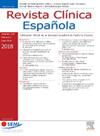西班牙医院收治的心脏淀粉样变性患者的临床特征和预后分析(2016-2021 年)。
IF 1.7
4区 医学
Q2 MEDICINE, GENERAL & INTERNAL
引用次数: 0
摘要
简介和目的心脏淀粉样变性(CA)是一种普遍但未被诊断的心脏疾病,其特征是淀粉样纤维的异常积累,经常导致心力衰竭(HF),特别是在老年人中。尽管非侵入性诊断技术和治疗取得了进步,但CA患者的流行病学仍未得到充分了解。这项全国性的回顾性观察性研究旨在全面调查CA患者的特征、死亡率和再入院模式。方法一项回顾性观察性研究纳入了西班牙各医院2016年至2021年间所有CA住院患者。以西班牙人口为参照,采用年龄和性别调整方法计算标准化发病率。该调查深入研究了人口统计学变量、合并症、指数发作期间的死亡率,以及循环系统疾病30天和365天的再入院率。再次入院的预测因素也被检查。结果共发现5739例指标发作,14.1%的病例以CA为主要入院原因。平均年龄81.4±9.9岁,男性居多(70.3%)。年龄和性别标准化的医院出勤率为每10万人3.90人次(95% CI: 3.82-3.98),男性更高。常见的合并症包括HF(96.4%)、心房颤动(46.3%)和肾衰竭(44.4%)。指标发作期间死亡率为11.7%,其中心源性休克(OR: 9.03;95% CI: 4.22-19.32)和严重精神障碍(OR: 3.36;95% CI: 1.42-7.94)被确定为预测因子。在随访期间,13.1%的患者在30天内再次入院,36.6%的患者在365天内再次入院。肾炎(IRR: 2.05;95% CI: 1.42-2.96)和哮喘(IRR: 1.52;95% CI 1.11-2.07)与30天再入院增加相关,而肾功能衰竭(IRR: 1.43;95% CI: 1.28-1.59)和慢性肺部疾病(IRR: 1.40;95% CI: 1.18-1.67)与较高的365天再入院率有关。365天再入院的死亡风险预测因子包括晚期癌症(HR: 1.31;95% CI: 1.00-1.71),心源性休克在指数发作(HR: 2.72;95% CI: 1.33-5.57),在此期间再入院人数较高(HR: 1.64;95% ci: 1.56-1.73)。结论:本研究对经常被忽视和低估的CA的显著患病率提供了有价值的见解。主要折磨老年男性伴有心衰和多种合并症,CA提出了重大的临床挑战。研究结果强调需要提高认识,早期发现和多学科方法来管理这种复杂的心脏疾病。本文章由计算机程序翻译,如有差异,请以英文原文为准。
Análisis de las características clínicas y pronóstico de los pacientes con amiloidosis cardiaca ingresados en los hospitales españoles (2016-2021)
Introduction and objectives
Cardiac amyloidosis (CA) is a prevalent yet underdiagnosed heart condition characterized by the abnormal accumulation of amyloid fibres, frequently resulting in heart failure (HF), particularly in older people. Despite advancements in non-invasive diagnostic techniques and treatments, the epidemiology of CA patients remains inadequately understood. This nationwide retrospective observational study sought to comprehensively investigate CA patients’ characteristics, mortality, and readmission patterns.
Methods
A retrospective observational study encompassed all patients hospitalized with CA between 2016 and 2021 across Spanish hospitals. Standardized incidence rates were calculated using age and sex-adjusted methods, utilizing the Spanish population as the reference. The investigation delved into demographic variables, comorbidities, mortality during the index episode, and 30 and 365-day readmissions for circulatory system diseases. Predictors of readmission were also examined.
Results
A total of 5,739 index episodes were identified, with CA being the primary cause of admission in 14.1% of cases. The mean age was 81.4 ± 9.9 years, predominantly males (70.3%). The age and sex-standardized hospital attendance rate was 3.90 admissions per 100,000 population (95% CI: 3.82-3.98), higher in males. Common comorbidities included HF (96.4%), atrial fibrillation (46.3%), and renal failure (44.4%). The mortality rate during the index episode was 11.7%, with cardiogenic shock (OR: 9.03; 95% CI: 4.22-19.32) and major psychiatric disorders (OR: 3.36; 95% CI: 1.42-7.94) identified as predictors.
Over the follow-up period, 13.1% were readmitted at 30 days and 36.6% at 365. Nephritis (IRR: 2.05; 95% CI: 1.42-2.96) and asthma (IRR: 1.52; 95% CI 1.11-2.07) were associated with increased 30-day readmissions, while renal failure (IRR: 1.43; 95% CI: 1.28-1.59) and chronic pulmonary disease (IRR: 1.40; 95% CI: 1.18-1.67) were linked to higher 365-day readmissions. Predictors of mortality risk in 365-day readmissions included advanced cancer (HR: 1.31; 95% CI: 1.00-1.71), cardiogenic shock in the index episode (HR: 2.72; 95% CI: 1.33-5.57), and a higher number of readmissions during that period (HR: 1.64; 95% CI: 1.56-1.73).
Conclusions
This study contributes valuable insights into the significant prevalence of CA, which is often overlooked and underestimated. Afflicting predominantly elderly males with concomitant HF and multiple comorbidities, CA poses a significant clinical challenge. The findings underscore the need for enhanced awareness, early detection, and a multidisciplinary approach to manage this complex cardiac condition.
求助全文
通过发布文献求助,成功后即可免费获取论文全文。
去求助
来源期刊

Revista clinica espanola
医学-医学:内科
CiteScore
4.40
自引率
6.90%
发文量
73
审稿时长
28 days
期刊介绍:
Revista Clínica Española published its first issue in 1940 and is the body of expression of the Spanish Society of Internal Medicine (SEMI).
The journal fully endorses the goals of updating knowledge and facilitating the acquisition of key developments in internal medicine applied to clinical practice. Revista Clínica Española is subject to a thorough double blind review of the received articles written in Spanish or English. Nine issues are published each year, including mostly originals, reviews and consensus documents.
 求助内容:
求助内容: 应助结果提醒方式:
应助结果提醒方式:


